Leone, Briana and Alison Kenner. (2020, September 3). "Energy Vulnerability Pedagogy Project." Disaster STS Network. Platform for Experimental and Collaborative Technology. https://housingenergy.info/content/energy-vulnerability-pedagogy-project...
"Energy Poverty: Why it matters infographic." (2020, April 28). Texas Energy Poverty Research Institute. Retrieved from http://www.txenergypoverty.org/2020/04/energy-insecurity-why-it-matters-...
In collaboration with the Transnational-STS group, an adaptive and collaborative research group of scholars across the globe, the Energy Vulnerability project worked on creating a pedagogy document to be used to teach energy vulnerability to students. The Pedagogy Project, contains materials on data collected for the issue, be it from the research group itself, from the Energy Information Administration (EIA), and the National Institute of Health (NIH), or even the National Association of Regulatory Utility Commissioners (NARUC). The research group spent not an insignificant amount of time drafting this document, given activities had to be drafted from the data provided on the pedagogy document. As part of the data collection methods exercises to be included in the pedagogy, the research group also thought it would be useful to include a data collection activity into the document. This activity is part of the shortened version of the survey as drafted for the investigations performed by The Energy Vulnerability Project. The survey activity included in the pedagogy project also includes questions as used on the RECS survey. The research group also cares to point out that the shortened version of the survey could not possibly measure all levels of energy vulnerability and, thus, results gathered by students should be taken with a grain of salt.
The questions below can be used to narrow down the topics of research as related to energy vulnerability, COVID-19 responses taken by the states to alleviate the burdens of unemployment and stacking energy fees. While the questions are very specific, they could also be modified to accommodate other investigations of energy vulnerability. That said, these questions could be used to steer research into specific factors comprising energy vulnerability. The different sections on guided questions each cater to specific aspects already taken into consideration by the Energy Vulnerability Project and are, actually, more similar than dissimilar when it comes to the questions’ focuses.
To gain familiarity with the social problem of energy vulnerability, it is important to review between three and five scholarly articles or resources as presented in the ‘supporting resources’ section. That said, one should be able to have enough acquaintance with what may constitute energy vulnerability in order to review the data sources on State’s socioeconomic standings, LIHEAP, and State moratoria. The course activities are best conducted if students have enough understanding of energy vulnerability and of the socioeconomic data surrounding socioeconomic factors broadly related to energy vulnerability and that can influence rates of energy vulnerability.
Residential Energy Consumption Survey (RECS)
The above resource is a pdf document of the 2015 survey compiled by the Energy Information Agency (EIA) used to measure household energy consumption.
Definitions of energy vulnerability
This is a document compiled by one of the Research Assistants on The Energy Vulnerability Project that compiles images of how energy vulnerability is differently depicted; in it, there are definitions for each of the different terms used.
Energy Vulnerability, Energy Insecurity, and Energy Poverty
This is a PECE essay written by another Research Assistant on The Energy Vulnerability Project that illustrates how different terminology in the energy vulnerability field is used and understood.
Energy Insecurity among Families with Children
This is a scholarly article compiled by energy vulnerability scholars Hernandez et al. (2014), detailing the effects of household inability to meet energy bills and the effects on the health and wellbeing of children in energy insecure homes.
Housing hardship and energy insecurity among native-born and immigrant low-income families with children in the United States
This is an article by energy vulnerability scholars Hernandez et al. (2016) on burdens faced by low-income families, including energy insecurity. The paper also takes into consideration the disproportionate burdens experienced by different populations.
Energy Insecurity: A Framework for Understanding Energy, the Built Environment, and Health Among Vulnerable Populations in the Context of Climate Change
This is an editorial on energy insecurity and health by Diana Hernandez.
Energy Vulnerability in the Grain of the City: Toward Neighborhood Typologies of Material Deprivation
This article was written by scholars Bouzrovski and Thomson (2015) on the spatialities of the city and their impacts on burdens faced by households, which include energy vulnerability.
The link between vulnerabilities in energy, food, and water systems
This is a news article detailing supply and demand for energy, food, and water and their interconnectedness with resource scarcity.
Plenty at stake: Indicators of American energy insecurity
This is a white paper, dated 2014, written by U.S. State Senators to establish measures of energy insecurity.
Taxing Our Way to Energy Insecurity Again
A report on the burdens taxes placed on energy consumers, given rising energy costs.
COVID-19 assistance needs to target energy insecurity
An article by scholars Graff and Carley (2020) on needed response measures to energy insecurity as specifically situated in the COVID-19 context.
Energy Insecurity and Renewable Energy Sources: Prospects and Challenges for Azerbaijan
This article by scholar Aydin (2019) discusses Azerbaijan’s energy history and the insecurities in the energy supply-demand chain.
____________________________________________
Scholarly Articles on WAP and LIHEAP
This document was compiled by one of the Research Assistants on The Energy Vulnerability Project and collects scholarly articles evaluating energy programs like WAP and LIHEAP.
History of WAP and LIHEAP
This document was compiled by one of the Research Assistants on The Energy Vulnerability Project and collects information on the birth and implementation of WAP and LIHEAP to more recent years.
LIHEAP Funding Formula // History of LIHEAP Appropriations
This document was compiled by one of the Research Assistants on The Energy Vulnerability Project and details how LIHEAP operates and how its funding is calculated and distributed.
LIHEAP Funding Formula
This is a PECE essay written by one of the Research Assistants on The Energy Vulnerability Project expanding on the investigation conducted and collected in the notes previously cited.
8/4/20 - NEUAC LIHEAP Conference
This document is a fieldnotes document of one of the Research Assistants on The Energy Vulnerability Project from the 2020 NEUAC Conference. The sessions here attended specifically discussed LIHEAP implementation and special revisions as strictly related to the COVID-19 pandemic.
LIHEAP and WAP Funding
This is a resource compiled by the U.S. Department of Health and Human Services on ways in which LIHEAP and WAP funding have been dispensed for the fiscal years 2019-2020.
Low-Income Energy Office Search Tool
This search tool is linked on the U.S. Department of Health and Human Services website to help website users find their local LIHEAP office.
State Low-Income Energy Assistance Snapshots
This tool on the U.S. Department of Health and Human Services website gives brief overviews of LIHEAP implementation across states.
Poverty & Unemployment, EV, Chronic conditions, and State politics
This table was compiled by one of the Research Assistants on The Energy Vulnerability Project to collect information on the socio-economic conditions of states across the nation prior to COVID-19 to make pre- and post-pandemic comparative analyses.
State Response Tracker
This table is compiled and kept updated by members of the National Association of Regulatory Utility Commissioners on state Public Utility Commissions (or Public Service Committees) responses to the COVID-19 pandemic.
Utility companies in different states
This document was compiled by one of the Research Assistants on The Energy Vulnerability Project and collects contact and general information on utilities in six different states. It is being used to investigate utility responses as moratoria come to a close.
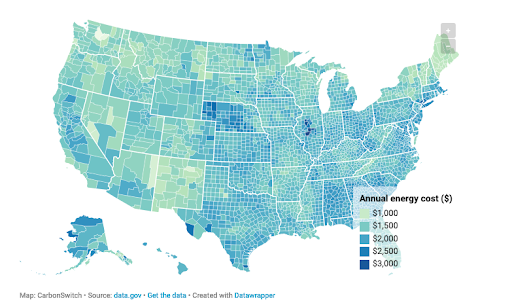
This map shows the annual energy costs as documented by zip codes across the United States. The darker the shade of blue, the higher the energy costs, the greater the probability of those zip codes having energy vulnerable households.
Carbon Switch. 2021. Retrieved from https://carbonswitch.co/about-us
Below you may find resources that can be used to collect data on energy vulnerability. The first survey-based activities are primary data source collection, which gives the students the opportunity to conduct ethnographic-based structured data collection. Generally speaking, the surveys should not be implemented in a written fashion but should serve as scripts for students administering the survey. In other words, when students survey respondents who agree to participate the respondents should not see the questions. The survey questions will be asked in a semi-structured interview format but when respondents give their answers, survey administrators will select the answers that have been predicted and add additional ‘word-for-word’ responses given by respondents in a text box or under the question being asked.
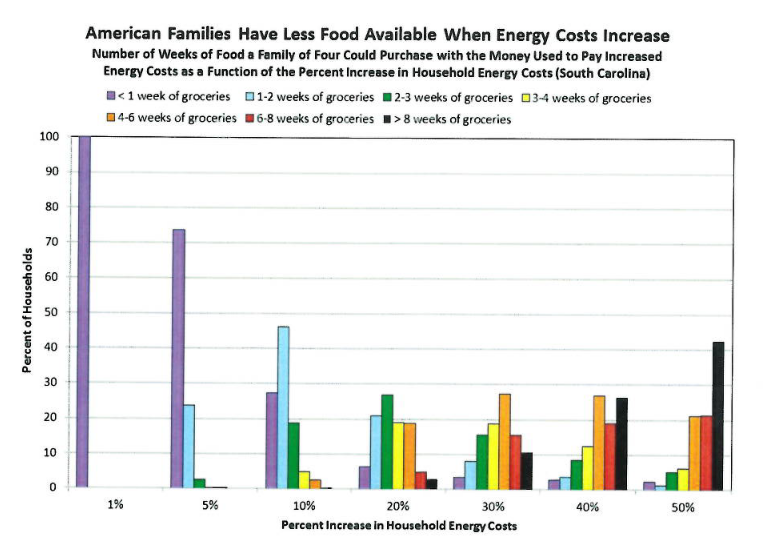
The graph shown is part of a white paper published by US senators in the 113th Congress on energy insecurity as experienced in the nation (Murkowski & Scott, 2014).
Murkowski, L. and Scott, T. (2014, September). Plenty at Stake: Indicators of American Energy Insecurity. An Energy 20/20 White Paper.
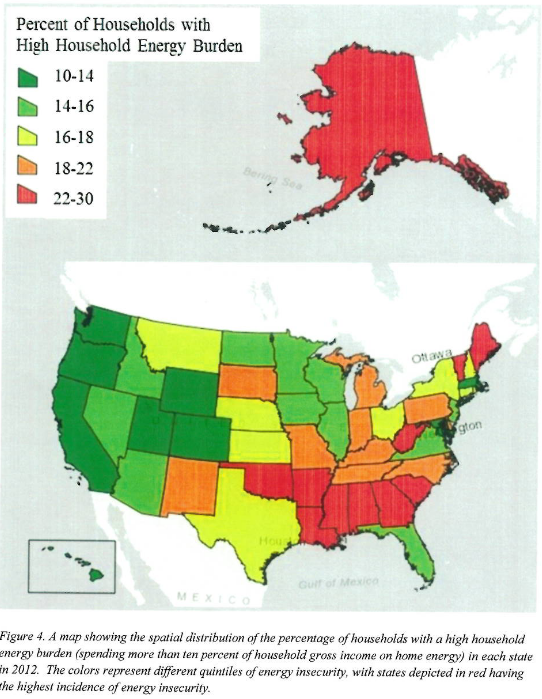
This map of energy burdened experienced by families in the nation is illustrated in a white paper published by US senators in the 113th Congress (Murkowski & Scott, 2014).
Murkowski, L. and Scott, T. (2014, September). Plenty at Stake: Indicators of American Energy Insecurity. An Energy 20/20 White Paper.
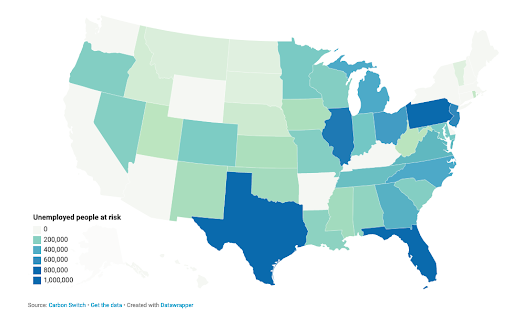
This image shows the risk of having utilities shutoff for households with unenmployed individuals, particularly as moratoria come to a close.
Carbon Switch. 2021. Retrieved from https://carbonswitch.co/about-us
The activities proposed here do not necessarily require students to survey people. Instead, they help students hone in on their observational skills and on their secondary data collection. The following activities are based on the data presented in prior sections and could be answered using scholarly articles, the data sources compiled, and also supplemented by students’ independent searches.
Select five states to compare responses to COVID-19 crises.
Select 3-5 states to analyze energy vulnerability trends.
Profile energy vulnerability in 3-5 states.
a. Describe how moratoriums were handled in these states.
Profile utility landscapes based on region (i.e. Northeast, Northwest, West, Mid-Atlantic, etc.).
Evaluate the risk of energy vulnerability in 3-5 states.
Evaluate risks of contracting COVID-19 in 3-5 states.
Evaluate the risk of contracting COVID-19 and being thrust into energy vulnerability in 3-5 states.
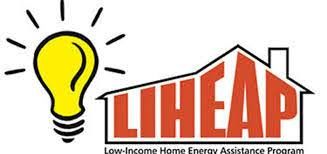
The Jersey Journal. (2019, Jan 17). "Bayonne urges residents struggling to heating bills to contact BEOF for assistance applications." NJ: True Jersey. Retrieved from https://www.nj.com/hudson/2015/01/bayonne_urges_residents_struggling_to_...